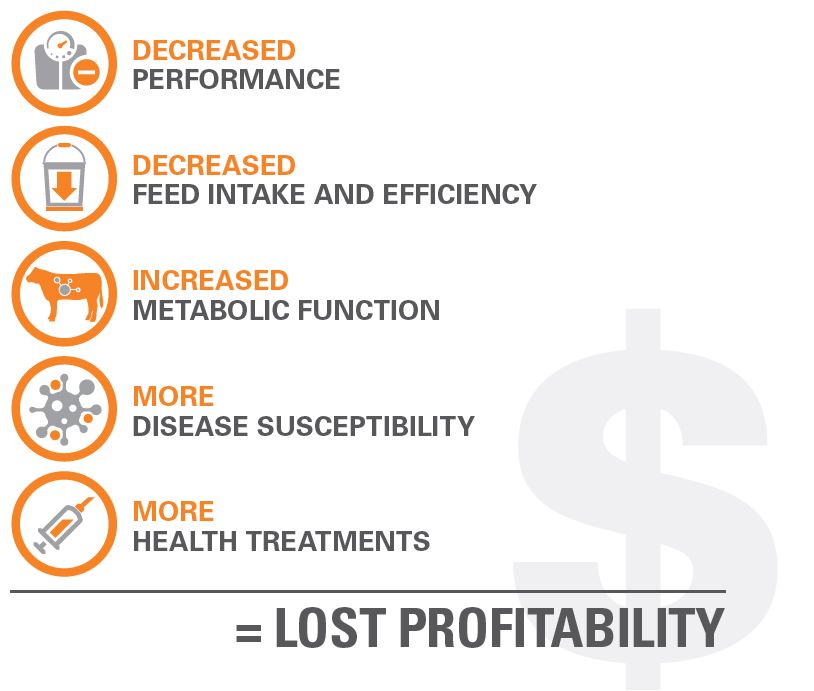References
1S. K. Kvidera, E. A. Horst, M. Abuajamieh, E. J. Mayorga, M. V. Sanz Fernandez, and L. H. Baumgard. Technical note: A procedure to estimate glucose requirements of an activated immune system in steers. J. Anim. Sci. 2016.94:4591–4599.
2Kluger, M.J. and B.A. Rothenburg. 1979. Fever and reduced iron: Their interaction as a host defense response to bacterial infection. Science 203(4378):374–376.
3Burdick NC, Bernhard BC, Carroll JA, Rathmann RJ, Johnson BJ. Enhancement of the acute phase response to a lipopolysaccharide challenge in steers supplemented with chromium. Innate Immunity. 2012 Aug;18(4):592-601. doi: 10.1177/1753425911428964. Epub 2011 Dec 16.
4Bernhard BC, Burdick NC, Rounds W, Rathmann RJ, Carroll JA, Finck DN, Jennings MA, Young TR, Johnson BJ. Chromium supplementation alters the performance and health of feedlot cattle during the receiving period and enhances their metabolic response to and lipopolysaccharide (LPS) challenge. J. Anim. Sci. 90:3879-3888.
5Palsson-McDermott, E. M., and L. A. O’Neill. 2013. The Warburg effect then and now: From cancer to inflammatory diseases. BioEssays 35:965–973.
6Sagone, A. L., A. F. LoBuglio, and S. P. Balcerzak. 1974. Alterations in hexose monophosphate shunt during lymphoblastic transformation. Cell. Immunol. 14:443–452. Sheldon, I. M., E. J. Williams, A.
7Furukawa, S., H. Saito, T. Matsuda, T. Inoue, K. Fukatsu, I. Han, S. Ikeda, A. Hidemura, and T. Muto. 2000. Relative effects of glucose and glutamine on reactive oxygen intermediate production by neutrophils. Shock 13:274–278.
8Healy, D. A., R. W. Watson, and P. Newsholme. 2002. Glucose, but not glutamine, protects against spontaneous and anti-Fas antibody induced apoptosis in human neutrophils. Clin. Sci. 103:179–189.
9Garcia, M., T. H. Elsasser, Y. Qu, X. Zhu, and K. M. Moyes. 2015. Glucose supplementation has minimal effects on blood neutrophil function and gene expression in vitro. J. Dairy Sci. 98:6139–6150.









